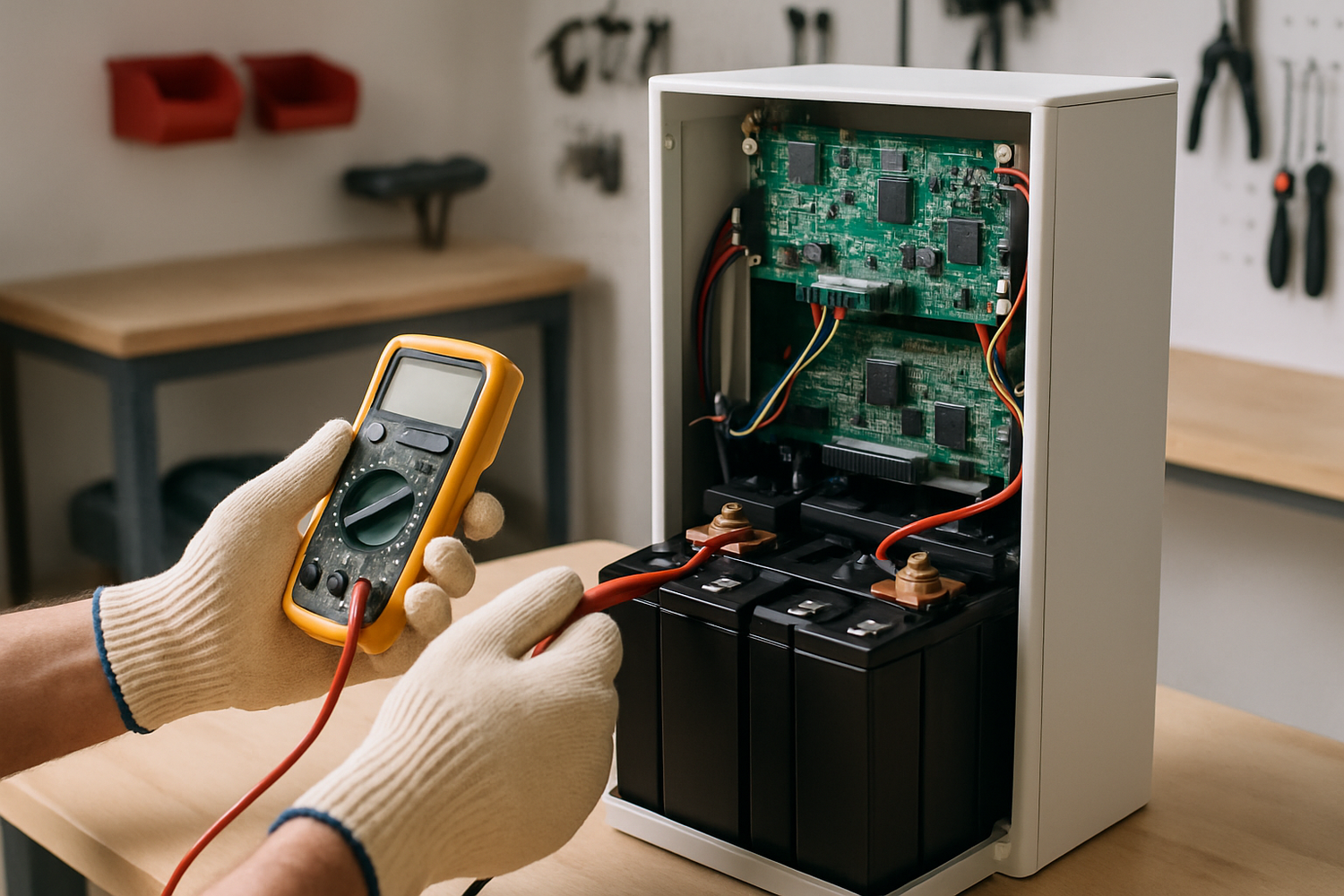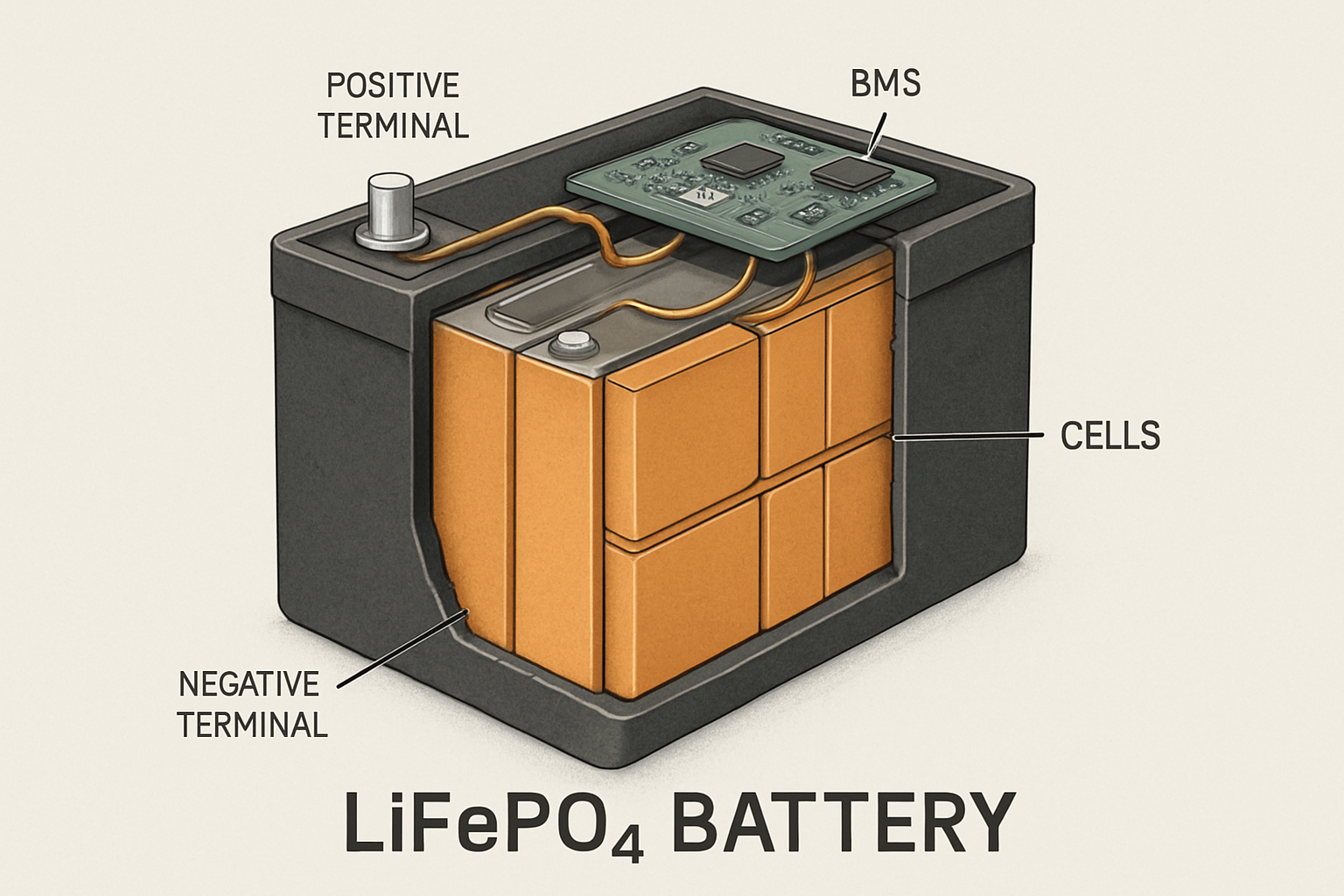A Battery Management System (BMS) is the brain of your home energy storage system. It works silently to protect your valuable lithium battery investment. When it detects a potential threat—like excessive voltage or extreme temperatures—it enters protection mode, effectively shutting down the battery to prevent damage. While this is a critical safety feature, it leaves you without power. A proper Home Energy Storage BMS reset can bring your system back online, but performing it safely is paramount to protecting both you and your equipment.
Why a BMS Enters Protection Mode
Understanding why your BMS activates its protection mode is the first step toward resolving the issue and preventing it from happening again. It's not a malfunction; it's a safeguard. The BMS constantly monitors various parameters to keep the battery operating within its safe limits.
Overcharge and Over-Discharge Protection
Lithium-ion batteries, including LiFePO4 types, are sensitive to their state of charge. Overcharging can cause permanent damage to the cells and create safety hazards. Conversely, over-discharging can also reduce the battery's lifespan and capacity. The BMS will cut off the connection if the voltage of any cell goes above or below the predefined safe thresholds, protecting the entire pack.
Temperature and Short Circuit Safeguards
Operating temperature is another critical factor. If your battery gets too hot during a rapid charge or discharge, or too cold to be safely charged, the BMS will intervene. It prevents thermal runaway and other temperature-related degradation. Similarly, in the event of a short circuit, the BMS provides an instantaneous disconnect to prevent catastrophic failure and potential fire, a feature essential for the resilience of modern power systems as noted by the International Energy Agency's report on power system flexibility.
Before You Reset: Essential Safety Checks and Diagnostics
Attempting a BMS reset without first diagnosing the underlying problem is like hitting the snooze button on an alarm—it doesn't fix the reason it went off. A thoughtful approach ensures a lasting solution rather than a temporary fix.
Identifying the Root Cause of the Fault
Before you do anything, investigate. Was the system under an unusually heavy load? Did the ambient temperature spike? Check your solar charge controller or inverter for any error codes. These codes provide valuable clues about what caused the BMS to trip. A simple visual inspection can also be helpful. Look for loose connections, damaged wires, or any signs of physical distress on the battery casing. Correcting the external fault is necessary before a Reset BMS safely procedure will be effective.
Tools and Precautions for a Safe Reset
Safety should always be your priority. Before working on your home battery system, ensure you have the right gear. This includes insulated gloves, safety glasses, and tools with insulated handles. Always disconnect the battery from all loads and charging sources, including the solar panels and the inverter, before proceeding. This isolates the battery and prevents any accidental shorts or electrical shocks.
A Step-by-Step Guide to Safely Resetting Your BMS
Once you have identified and resolved the external fault, you can proceed with the reset. There are generally two methods: a soft reset and a hard reset. Always start with the simplest method first.
The Soft Reset: A Simple First Step
A soft reset is the easiest and often most effective method. For many systems, this involves simply disconnecting the main power cables from the battery terminals for a few minutes. This allows the BMS's internal microprocessor to reboot. After waiting for about 5-10 minutes, reconnect the cables (positive first, then negative). In some systems, the BMS may have a dedicated physical reset button. Check your manufacturer's documentation to confirm the correct procedure.
Performing a Hard Reset: When and How
A hard reset is a more involved process and should only be performed if a soft reset fails and you are confident in your technical skills. This procedure often requires opening the battery case to access the BMS board itself. It typically involves temporarily disconnecting the BMS sense wires from the battery cells. This process can be complex and varies significantly between manufacturers. Due to the risks involved, consulting your product manual or a qualified technician is highly recommended before attempting a hard reset. Missteps here can lead to permanent damage.
Post-Reset System Verification
After any reset, it's crucial to verify that the system is operating correctly. Reconnect your charging sources and loads one by one. Use a multimeter to check that the battery voltage is within the normal range. Monitor your system's performance closely for the next few hours. Tracking key metrics is vital for confirming system health. For an in-depth understanding of what to monitor, you can review this ultimate reference on solar storage performance, which details important indicators like State of Charge (SoC) and Depth of Discharge (DoD).
Optimizing Your System to Prevent Future BMS Lockouts
A recurring BMS trip indicates an underlying issue with your system's design or settings. Proactive management is key to ensuring the long-term reliability of your energy storage solution. As highlighted in an IRENA valuation framework, the full economic value of energy storage is only realized when the system operates reliably.
Proper Charging and Discharging Practices
Ensure your inverter and solar charge controller settings match the battery manufacturer's specifications. This includes setting the correct bulk charge voltage, float voltage, and low-voltage cutoff points. Avoid consistently discharging your battery to 0% SoC. Leaving a small buffer (e.g., discharging to only 20%) can significantly extend the life of your LiFePO4 battery and reduce the likelihood of the BMS activating its under-voltage protection.
The Importance of Regular System Monitoring
Modern energy storage systems often come with monitoring software or apps. Use these tools to keep an eye on your battery's health. Regularly check cell balance, temperature, and charging/discharging currents. Early detection of anomalies allows you to make adjustments before the BMS is forced to intervene. This proactive approach ensures you get the most out of your home battery system reset and maintain its performance for years to come.
Restoring Your System's Full Potential
A BMS in protection mode is a sign that your system is working to protect itself. By understanding the causes, performing careful diagnostics, and following a safe reset procedure, you can confidently restore your system's operation. This knowledge empowers you to not only fix a problem but also to optimize your home energy storage system for longevity and reliable performance, helping you achieve true energy independence.
Frequently Asked Questions
How do I know if my BMS is in protection mode?
The most common sign is a complete loss of power from the battery. Your inverter will likely shut down and display a low-battery or no-battery error. Measuring the battery terminals with a multimeter will often show a very low or zero voltage reading, even if you know the battery should be charged. Some advanced BMS units may also have an indicator light or a Bluetooth app that reports the protection status.
Can resetting the BMS damage my battery?
If done correctly, a reset itself will not damage the battery. The danger lies in resetting the BMS without first fixing the underlying issue that caused it to trip. For example, if you reset a BMS that tripped due to a short circuit without fixing the short, it will simply trip again and could potentially cause more severe damage. Always diagnose first.
How often should I need to reset my BMS?
Ideally, never. A BMS entering protection mode is an exceptional event, not a routine one. If you find yourself needing to perform a BMS reset protection procedure frequently, it indicates a persistent problem in your system. This could be improperly configured charging parameters, an undersized battery for your loads, or a faulty component that requires professional attention.





Leave a comment
All comments are moderated before being published.
This site is protected by hCaptcha and the hCaptcha Privacy Policy and Terms of Service apply.